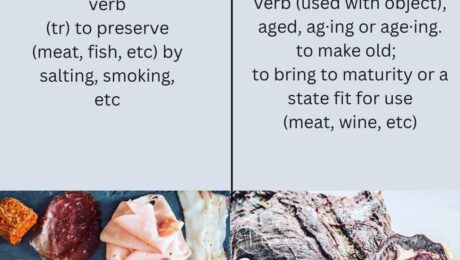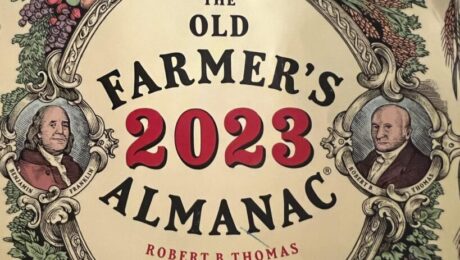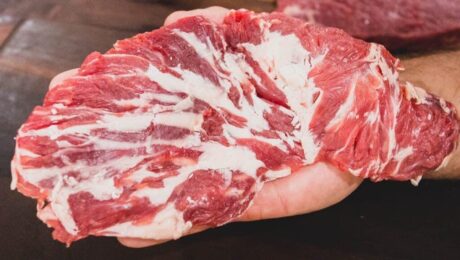Cured Meats VS Aged Meats:What’s the difference?
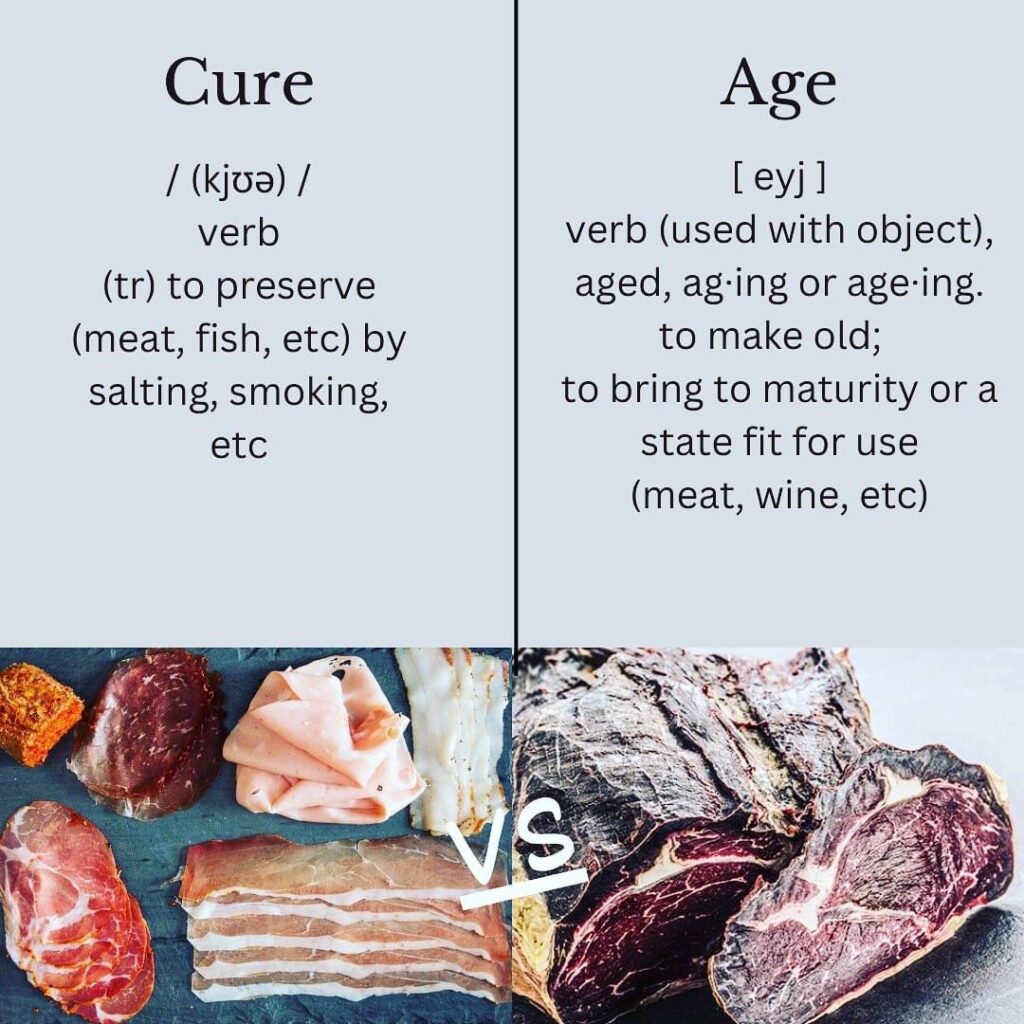
Cured meats are preserved by the addition of salt, with the aim of drawing moisture out of the food by the process of osmosis. Because curing increases the solute concentration in the food and hence decreases its water potential, the food becomes inhospitable for the microbe growth that causes food spoilage. Curing can be traced back to antiquity, and was the primary method of preserving meat and fish until the late 19th century. Dehydration was the earliest form of food curing. Many curing processes also involve smoking, spicing, cooking, or the addition of combinations of sugar, nitrate, and nitrite. The most common cured meats includes bacon, ham, salami, corned beef, kielbasa, blood sausage, andouille, pepperoni, pastrami, bologna, and prosciutto.
Aging is a process of preparing meat for consumption by letting the meat rest in temperatures just above freezing in order to break down the connective tissue within the meat. The two methods of aging meat are wet and dry aging. It is also the same process that occurs in meat that is “hung” in refrigeration.
To simplify, curing is a form of preserving meat and aging is like reverse rigor mortis, a form of tenderizing.
I see a lot of folks using these terms interchangeably. I hope this helps!
- Published in Ag Practices
Scheduling with The Farmer’s Almanac
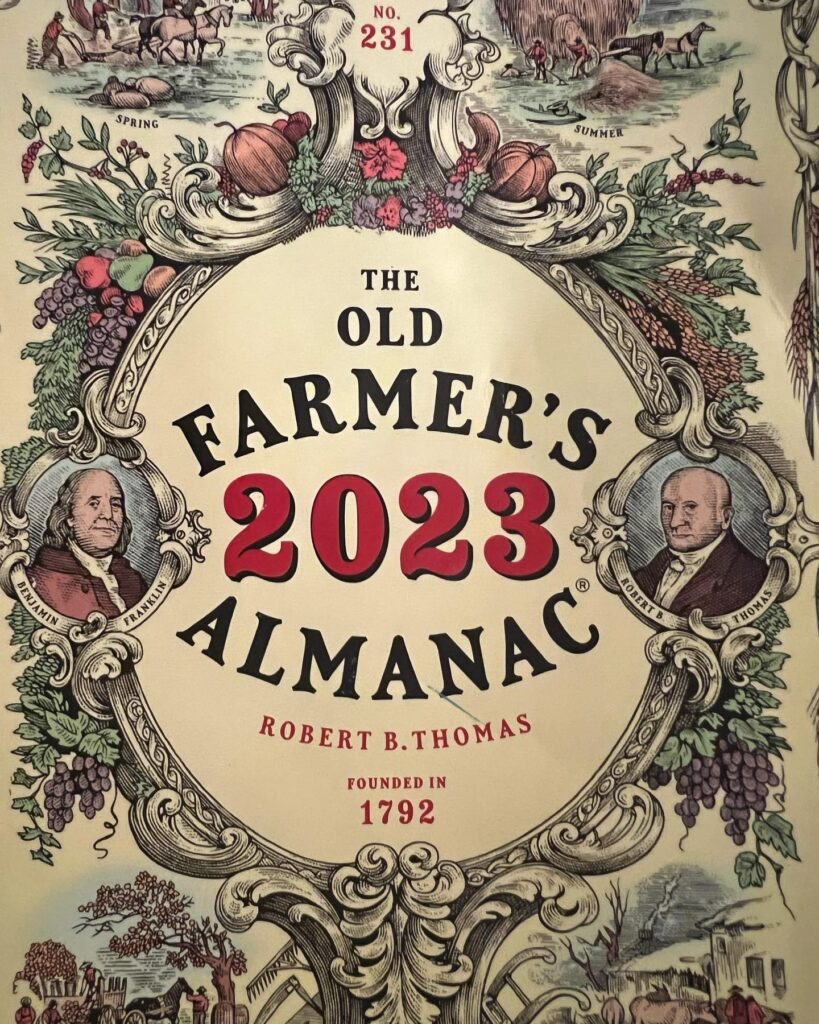
Staying warm and reading the 2023 Farmer’s Almanac today, found some interesting info!
According to the Almanac, here are the “Best Days” to slaughter livestock in 2023:
Jan. 15-17
Feb. 12, 13
March 11, 12
April 7, 8
May 4-6
June 1, 2, 28, 29
July 25-27
August 22, 23
September 18, 19
October 15-17
November 12, 13
December 9, 10
These dates are based on the Moon’s sign.
- Published in Ag Practices
OYSTER STEAK (US)aka “Spider Steak” (Australia)aka “Butcher’s Cut”aka “Pope’s Eye” (UK)
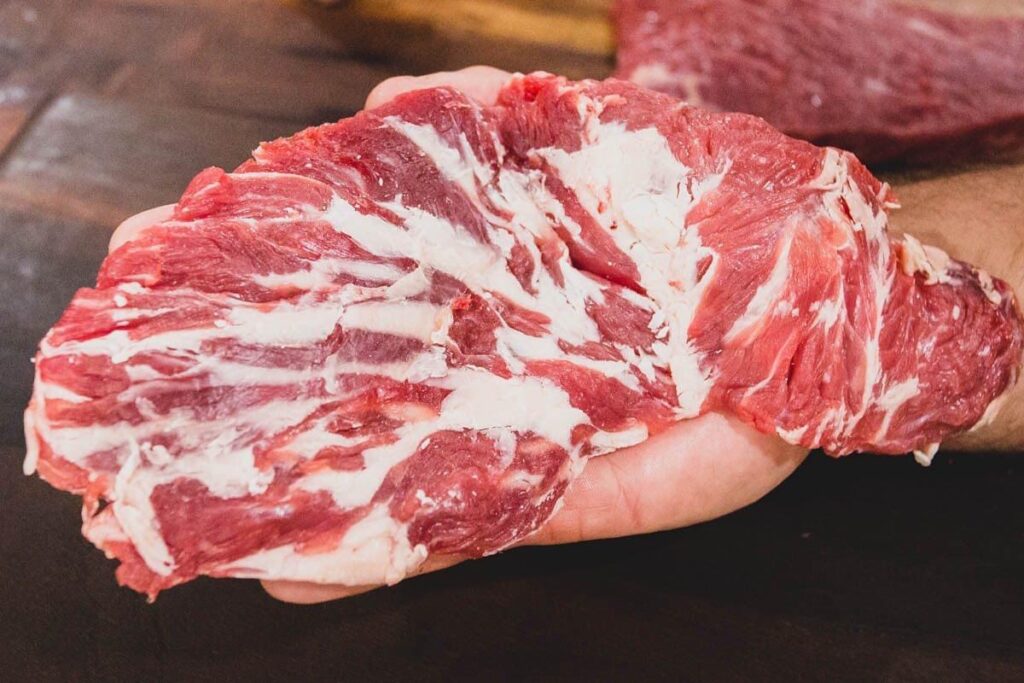
Whatever you call it, it’s a cool little semi-circle weaved with a web of intramuscular fat that sits inside the hip on the Aitch bone, and there are only two of these babies per beef. It’s small, flavourful thanks to it’s natural marbling and easy to prepare with a quick pan sear.
This fabulous steak will be making its way to our new cut sheet for 2023 along with some other exciting new options!
- Published in Meat Cuts
PORK SIRLOIN
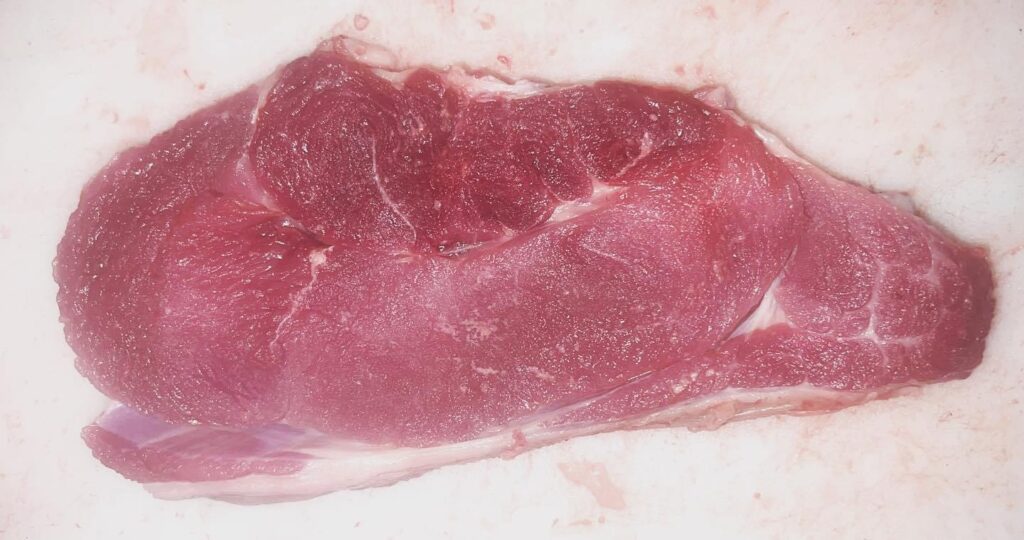
I didn’t realize so few people have experienced a pork sirloin!!

Pork sirloin is tender and full of flavor, but lacking in the fat department, so be careful not to overcook these beauties!
The pork sirloin is located near the tail end of your pork loin (pork chops), with typically just 3 steaks per side. Smaller breeds may have less, but that’s ok- it can also be made into a small roast if there isn’t enough to cut a couple steaks out of! Sirloins and sirloin roasts can be prepared bone-in or boneless. I prefer to cut them boneless, because the bones can be a little wonky.

Preparing them is easy! For steaks, treat it as you would a pork chop. You can easily avoid creating a dry, tough piece of meat by using your meat thermometer

. Safe internal temperature for pork is 145 degrees. Keep in mind, your meat will continue to cook once you remove it from your grill/oven/skillet/magic cooking device/etc. If opting for a sirloin roast, consider wrapping in caul fat for additional deliciousness.

- Published in Meat Cuts



